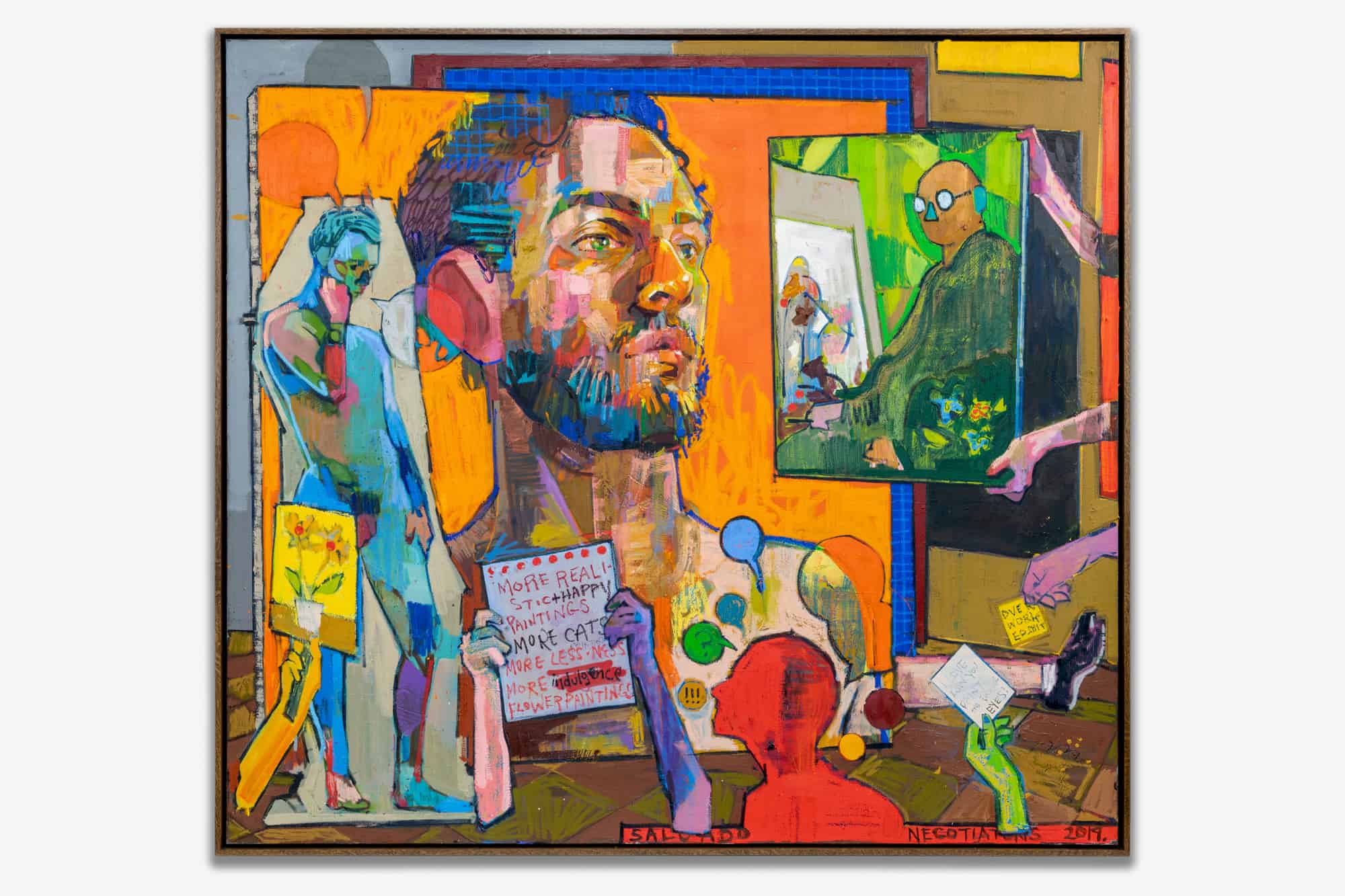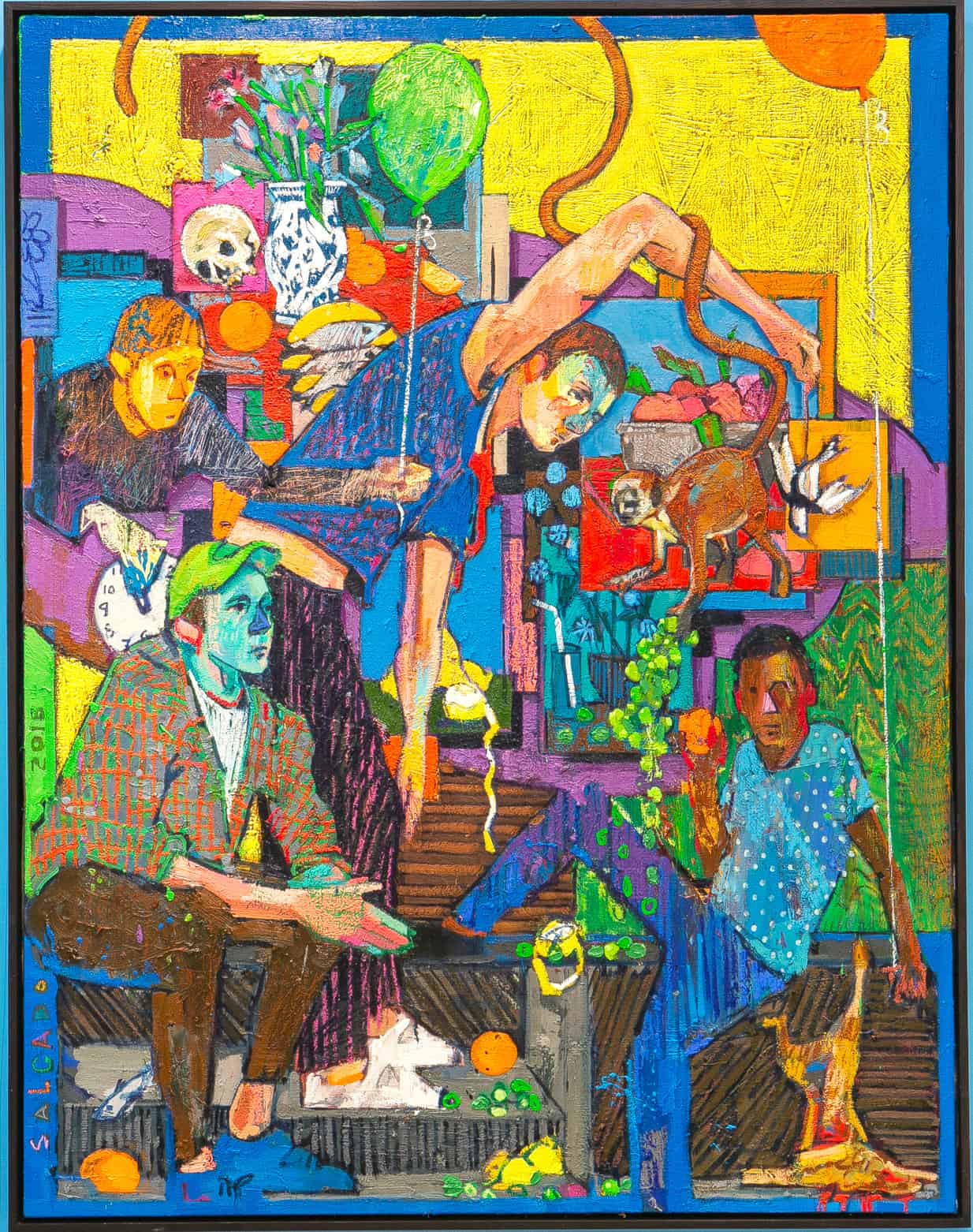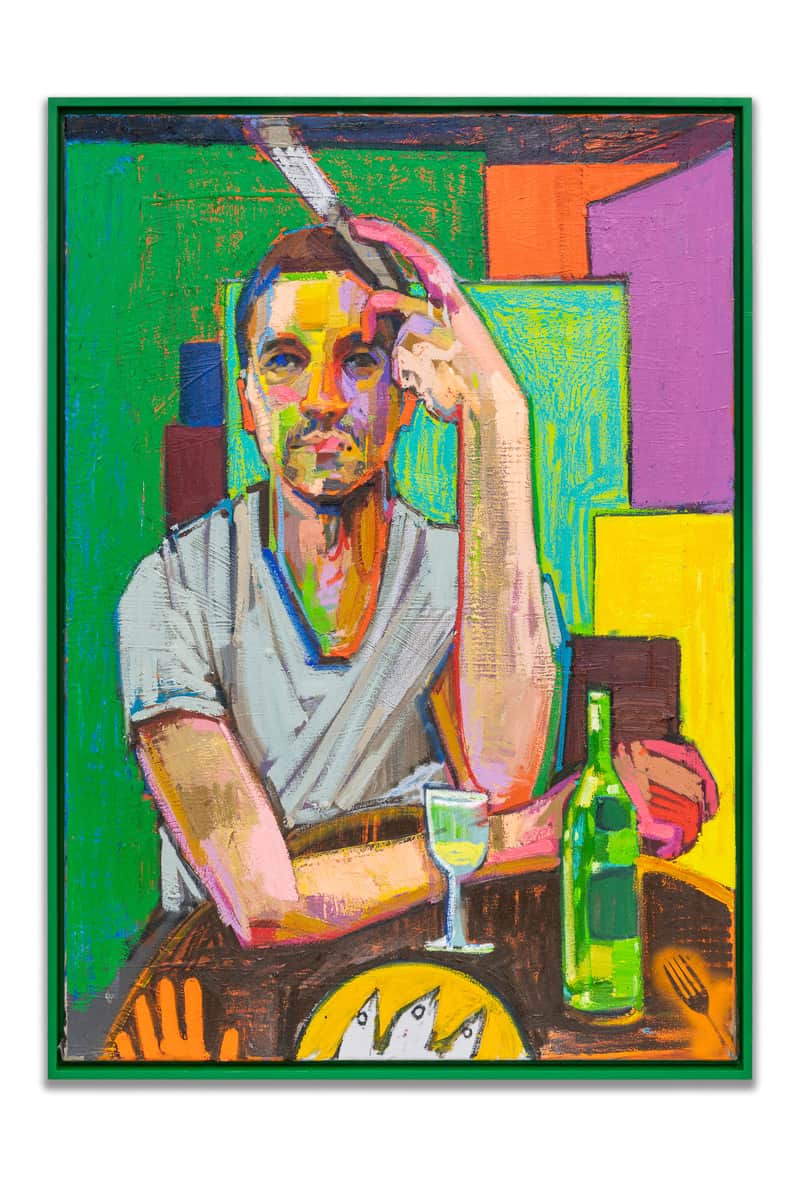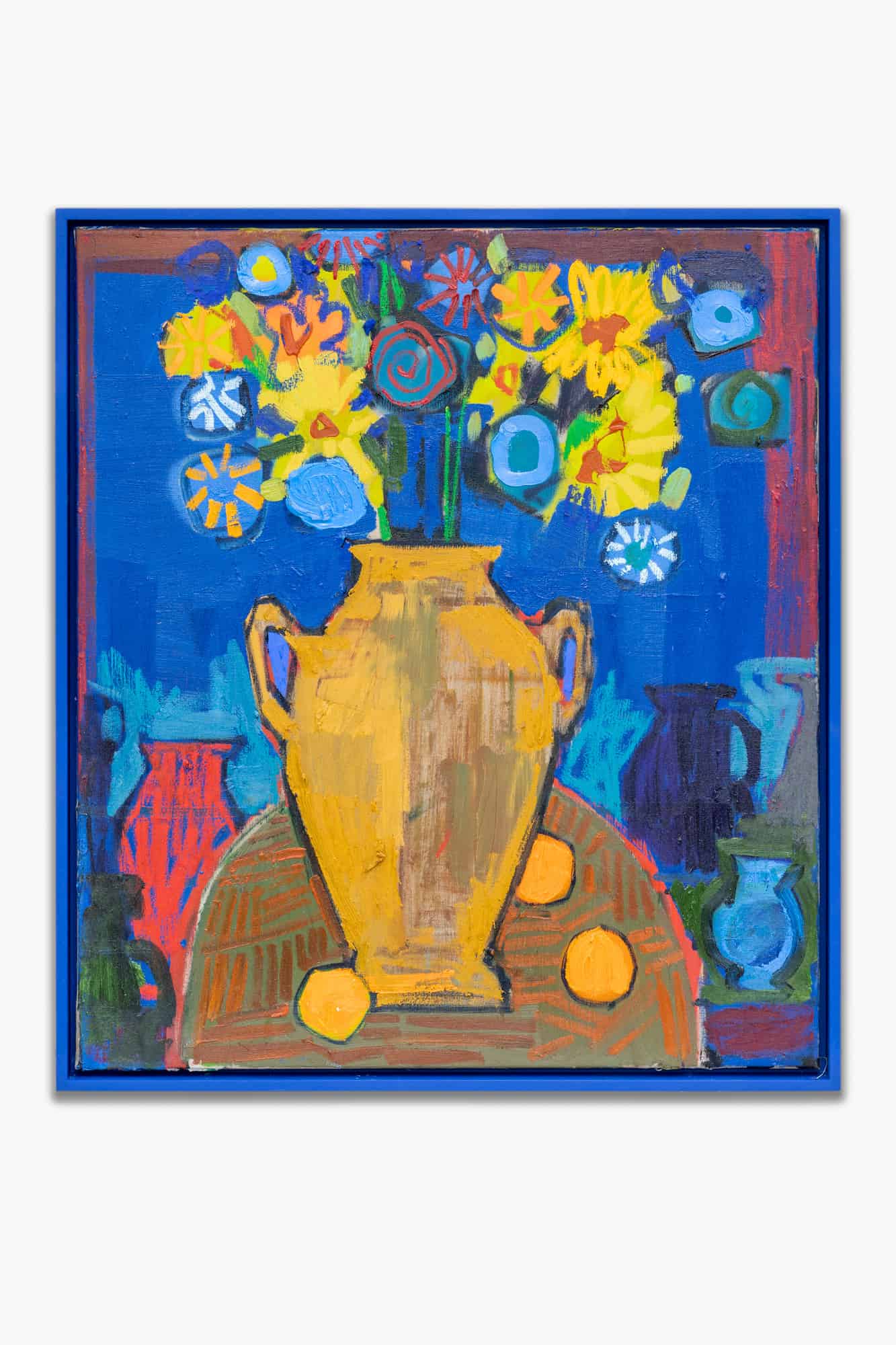Andrew Salgado’s paintings have evolved greatly in style since the large-scale, painterly portraits he began painting about a decade ago, where large swathes of colour played across the surface to define his subjects. In his most recent work – the representational has given way to the more abstract. Now colourful, symbolic, and compositional elements are the driving force of the painted image, but a complex interweaving of figures remain a common thread. Today his subjects are depicted in a fantastical, often ominous tableaux, with any combination of patterns, abundance, and excess play upon the painted surface, including harlequin-like figures, the motif of a heavy, low-hanging moon; or other unrecognisable figurative shapes sift in and out of the composition, partially obscured or partially revealed. Where there once was a desire to place the figure at the forefront of the image, now there is a kind of harmonious cacophony that creates a sort of chaotically orchestrated puzzle. There are abundant references to the tradition of figurative painting both historic and contemporary: Matisse, Gauguin, and Bacon are all readily recalled; while contemporary greats like Tal R, Daniel Richter, and Peter Doig are also referenced with equal reverie and respect – often like quiet in-jokes for a viewer to catch.
In his most recent series (entitled ‘Paper-Bag Prince’), completed for Untitled Art Fair Miami with Beers London, the very act of painting with a wry sense of humor and self-awareness is readily referenced – and critiqued. There is similarly a desire to shirk autobiography for the non-sequitur and playful. And as such, the works tend to be bright, celebratory, even theatrical, with an underlying macabre or dark aspect. For Salgado, each exhibition provides an opportunity to extend elements of the painting beyond the canvas–an invitation into a world of colour, fantasy, and fun.
ANDREW SALGADO (b. 1982, Regina, Canada) lives and works in London, England. He graduated with an MA in Fine Art from Chelsea College of Art and Design in 2009, and has since had 13 sold-out solo exhibitions held all over the world, and is widely regarded as one of the UK’s leading young figurative painters. In 2017, Salgado was the youngest artist to ever receive a survey-exhibition at The Canadian High Commission in London, accompanied by a 300-page monograph, both of which were entitled TEN. Previous solo exhibitions include, ‘Blue Rainbow’ Angell Gallery, Toronto, (October 2018); ‘Nature Boy’, Beers London, (2018); ‘Dirty Linen’, Christopher Moller Gallery, Cape Town (2018), ‘A Room with a View of the Ocean’, Lauba Art House, Zagreb (2017); ‘The Snake’, Beers London, (2016); ‘The Fool Makes a Joke at Midnight’, Thierry Goldberg, New York (2016). He has exhibited his work at various international art fairs, including Zona Maco, Mexico City (2019); Pulse Miami (2016); and Volta Basel (2015). In 2015, Salgado curated The Fantasy of Representation, including work by Francis Bacon, Gary Hume, and Hurvin Anderson, with an impassioned manifesto on representational painting. In 2014 he was the subject of a documentary, Storytelling. He has received extensive press both online and in print, including GQ, The Evening Standard, The Independent, Artsy, METRO, Attitude Magazine, Globe and Mail (CAN) and Macleans (CAN). He frequently donates to charities including Pride London, Stonewall, and Diversity Role Models; his donations to the Terrence Higgins Trust are of particular note, having have raised over £75,000 in 5 years. In March 2019, he successfully entered the secondary market with a piece in a Strauss & Co auction in South Africa. Forthcoming solo exhibitions include a booth at Untitled Miami over Art Basel, entitled, ‘Paper Bag Prince’ (December 2019); and a fourth solo exhibition at BEERS London, entitled, ‘In the Springtime We Go Dancing’ (May 2020). His works have been collected extensively in private and public collections worldwide.
SEBASTIAN NEEB
Sebastian Neeb uses sculpture, painting and a healthy dose of humour in order to speak of the mechanisms and strategies that are used in the manipulation of groups and individuals. Humour, he claims, is used as a method of gaining more direct access to the viewer, a way to confront the viewer in the same means that a viewer confronts an object. From here, he derives his quirky sense of humour. “For me, art is also an observer’s confrontation with an object. From this perspective, certain approaches unfold as to how an artwork is to be conceived in order to form the moment of confrontation and to convert it into a lasting effect.”






















